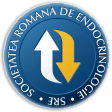
- Login
- Register
- Home/Current Issue
- About the journal
- Editorial board
- Online submission
- Instructions for authors
- Subscriptions
- Foundation Acta Endocrinologica
- Archive
- Contact
 Romanian Academy
Romanian Academy
 The Publishing House of the Romanian Academy
The Publishing House of the Romanian Academy

ACTA ENDOCRINOLOGICA (BUC)
The International Journal of Romanian Society of Endocrinology / Registered in 1938in Web of Science Master Journal List
Acta Endocrinologica(Bucharest) is live in PubMed Central
Journal Impact Factor - click here.

Showing 1 - 2 of 2
-
General Endocrinology
Can M, Kocabas M, Karakose M, Alsancak Y, Yerlikaya FH, Caliskan Burgucu H, Cordan I, Kadiyoran C, Kulaksizoglu M, Karakurt F
New Biomarkers to Predict Cardiovascular Risk in Patients with Adrenal Incidentaloma; Irisin and Nesfatin-1Acta Endo (Buc) 2022 18(2): 150-155 doi: 10.4183/aeb.2022.150
AbstractObjective. In our study, we aimed to investigate the levels of irisin, nesfatin-1 and the relationship between levels of these relatively new molecules with cardiometabolic risk markers; carotid intima-media thickness (CIMT), epicardial adipose tissue (EAT) thickness in patients with nonfunctional adrenal incidentaloma (NFAI). Materials and Methods. Patients with NFAI (n=59) and age, sex and body mass index-matched healthy control subjects (n=59) were enrolled in this study. Serum glucose, insulin, C-reactive protein (CRP), lipid, irisin and nesfatin-1 levels and echocardiographic CIMT and EAT thickness measurements were performed in patients and controls. Results. The irisin level was 17.58 ± 4.38 pg/mL in the NFAI group, significantly higher (p<0.001) than 14.03 ± 4.03 pg/mL in the control group. Nesfatin-1 level was significantly lower in the NFAI group 194.98 ± 119.15 pg/ mL ((p < 0.001)) versus 303.48 ± 200.78 pg/mL in the control group. A positive correlation was found between irisin and nesfatin-1 levels and CIMT and EAT thickness in the NFAI group. Conclusions. In our study, we found that irisin level was higher and nesfatin-1 level was lower in patients with NFAI, and both irisin and nesfatin-1 levels were associated with CIMT and EAT thickness in NFAI patients. -
General Endocrinology
Yarar Z, Caliskan Burgucu H, Can M, Kocabas M, Karakose M, Kulaksizoglu M , Karakurt F
Thyroid Nodule Frequency and Malignancy Risk According To ATA- 2015 and ACR-TI-RADS Classification in Obese PatientsActa Endo (Buc) 2024 20(4): 465-470 doi: 10.4183/aeb.2024.465
AbstractObjective. In our study, we aimed to evaluate thyroid nodule ultrasound findings, nodule frequency and malignancy risk according to the ultrasonographic classification systems [(American Thyroid Association-2015 (ATA) and American College of Radiology - Thyroid Imaging Reporting and Data System (ACR-TIRADS)] in obese and non-obese subjects. Materials and methods. 111 obese subjects and 111 non-obese age- and sex-matched control subjects were included in the study. The malignancy risk of the identified nodules was evaluated using ultrasonographic classification systems. Fine needle aspiration biopsy (FNAB) was performed on the nodules according to ultrasonographic malignancy risk, and cytopathological evaluation was performed according to the Bethesda system. Results. We did not find any difference between the groups in terms of age, sex, thyroid stimulating hormone (TSH) levels and thyroid volumes. We detected thyroid nodules in 36 (32.4%) of 111 subjects in the obese group and 22 (19.8%) of 111 subjects in the control group. Compared with controls, the prevalence of nodules was higher in obese subjects (p=0.046). There was no difference in the malignancy risk of nodules in obese subjects compared to non-obese subjects according to both ultrasonographic classification systems. Conclusion. We have determined that the frequency of thyroid nodules is higher in obese patients than in nonobese subjects. However, we did not find any difference between the two groups in terms of malignancy risk of thyroid nodules according to ultrasonographic classification systems.
Showing 1 - 2 of 2